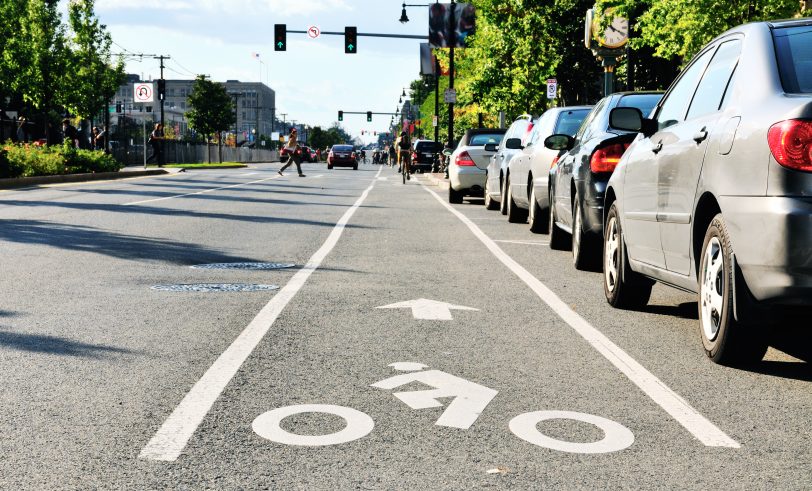I did not intend to spend so much time looking into BikeWalkKC’s proposal to spend around $400 million in taxpayer money on bike lanes in Kansas City. But when so many of the assertions made by BikeWalkKC crumble under the most cursory examination, it’s troubling. Consider this:
- The plan will likely not save 36 lives a year, as claimed.
- The plan will likely not create 12,600 jobs, as claimed. In fact, the as yet unfinished paper on which they base this claim doesn’t even make that claim itself.
If the plan won’t deliver on those prominent promises, will it even increase cycling?
According to traffic counts conducted by the Kansas City Public Works Department, cyclists constitute a negligible amount of street traffic. One-day traffic counts at a few intersections along Armour Blvd. in 2016 show that cyclists account for between zero to 0.06 percent of road traffic. Counts at similar intersections along Armour in 2018 and 2019 show the percentage of cyclists ranging between 0.02 percent to 0.16 percent of traffic.
Nationwide, the percentage of people who bike to work fell over 3 percent from 2016 to 2017. In Kansas City it was never high to start with. In 2014, 0.1 percent of Kansas Citians in the metro area commuted to work by cycling, and these recent Public Works numbers suggest it is even lower than that today.
The director of community planning for BikeWalkKC indicated by email that the organization conducted manual bike traffic counts in October 2016, but lost them. The traffic counts must not have been impressive, because BikeWalkKC chose not to include them in the Bicycle Network Demand Analysis they published the very next month. In fact, despite the promise of the title, there was no analysis of bicycle demand in the report at all. Quite the contrary, the report argues on page 8 that traffic accounts aren’t valuable anyway:
Observations of where cyclists are riding today can provide valuable insight, but cyclists counts cannot be a direct proxy for latent demand because they have already internalized all of the physical barriers and constraints that impact a cylist’s [sic] decisions.
The following bicycie [sic] infrastructure demand analysis is not intended to be a trip projection like those described above. The goal of this analysis is to determine where people would ride bicycles if facilities made it convenient and comfortable to do so. Therefore, latent demand is considered separately from the barriers and constraints of the physical environment.
In other words, don’t bother conducting an assessment of demand, just build it and they will come. The bike activists just assign scores to routes they think people would travel if there were bike lanes.
Certainly cities should ensure the safety of cyclists and motorists alike, and be supportive of growth in new types of travel. But biking to work in Kansas City is not a significant form of commuting and does not appear to be growing. Spending hundreds of millions of dollars because a few people hope it may help increase cycling is not sound public policy—not when Kansas City has so many other more significant needs.


